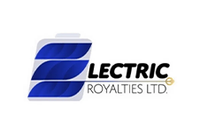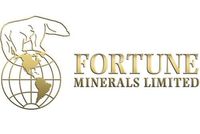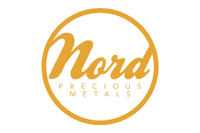Roskill: Cobalt Market to Remain Relatively Balanced in 2020
Roskill saw stronger-than-expected EV demand from Europe and the US in Q2, but demand in China picked up slower than the firm expected in Q1.
In a year that has seen uncertainty take center stage on the back of the COVID-19 pandemic, Roskill expects the cobalt market to remain relatively balanced for the rest of 2020.
“(We maintain) the view that this year we will probably see a slight year-on-year decrease in world refined cobalt production, largely as a result of tightening mine supply post-Mutanda’s closure and the slowdown in demand growth,” said Ying Lu, an analyst at the firm.
Roskill saw stronger-than-expected electric vehicle (EV) demand from Europe and the US in during the second quarter, but demand in China picked up slower than the firm expected in Q1.
“However, we believe China still has the most EV potential among all the markets. Going forward, a correct regulatory structure and incentives for carmakers could convert China into the largest EV market globally,” the expert told the Investing News Network.
Aside from the battery segment, demand from traditional end-use segments for cobalt, such as alloys and tool materials, has also taken a hit so far this year as aviation has been one of the sectors most affected by the pandemic, Lu explained.
“Cobalt metal used in alloys is typically sold at a premium over the benchmark cobalt metal price,” she said. “However, since March, we saw such premium continue to diminish, indicating weakening demand from the aerospace sector.”
Overall, cobalt prices in Q2 underperformed Roskill’s forecast made in early March by about 10 percent.
“This was mainly the result of subdued demand from end uses as COVID-19 became a pandemic. (It) has since impacted the global economy with the cobalt market being no exception,” Lu said.
Moving forward, Roskill expects to see some upside in premiums for both sulfate and tetroxide, the most common chemical forms of cobalt, for the rest of the year mainly owing to returning demand and rising production costs.
Commenting on the logistics and shipping challenges faced by the cobalt space due to the pandemic, Lu said things have improved in Durban since June but are still far from satisfactory, with vessels still being rolled or rescheduled at the moment.
Durban is South Africa’s main port for shipping cobalt hydroxide from the Democratic Republic of Congo (DRC) to Chinese refineries. South Africa imposed lockdown measures for five weeks earlier this year, which resulted in disruptions in the cobalt supply chain and, according to Lu, has led to spot tightness in hydroxide feedstock, pushing payables from the low 60s in early May to the high 70s now.
Roskill expects the limited availability of hydroxide feedstock to keep filtering to the downstream chemicals market.
“Given the stocks at both bonded warehouses and refineries are running low in Asia, sellers are now back to stronger positions for the first time in awhile,” she said. “Hydroxide payables may strengthen further in Q3 should logistic constraints not be resolved.”
In China, most cobalt refiners were back to operation from late February as lockdown measures were lifted in major cities, with the capacity utilization rate in the country increasing to over 65 percent in Q2.
Overall, Roskill expects to see a relatively balanced market for cobalt in 2020 after 2019’s oversupply. Lu said the industry will be looking for a balancing point between demand and supply post the pandemic.
“On the demand side, the performance of the EV and consumer electronics sectors in China and Europe would be the most important end-use markets to watch as key demand drivers,” she said.
The resurgence of lithium-iron–phosphate batteries in China or developments in new cobalt-free chemistries may also affect sentiment, despite limited direct impacts on demand in the short term.
What may happen in the DRC could also impact the supply side of the cobalt space, as a potential surge in COVID-19 cases, the nationalization of artisanal mining or an export ban on concentrate could all potentially cause tightness in the market.
“Given the cobalt price remains in the lower range of its historical average, stockpiling activities and speculations may also have the potential to further boost the magnitude of price upturn we observe at the moment,” Lu added.
Don’t forget to follow us @INN_Resource for real-time news updates.
Securities Disclosure: I, Priscila Barrera, hold no direct investment interest in any company mentioned in this article.
Editorial Disclosure: The Investing News Network does not guarantee the accuracy or thoroughness of the information reported in the interviews it conducts. The opinions expressed in these interviews do not reflect the opinions of the Investing News Network and do not constitute investment advice. All readers are encouraged to perform their own due diligence.


